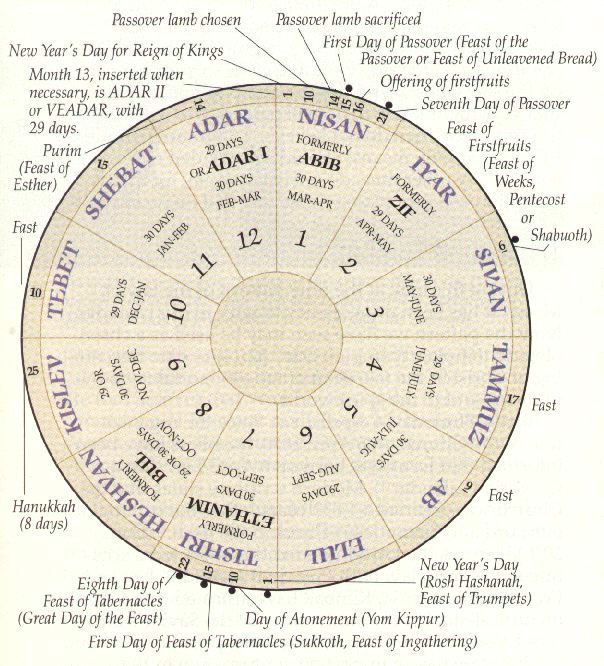Hebrew Lunar Calendar
Hebrew Lunar Calendar - 1 day in 216 years: 1 towards the beginning of the moon’s cycle, it appears as a thin crescent. 353, 354, or 355 leap year: Web the lunar calendar the system of keeping time in the old testament was based on the cycles of the moon rather than a solar calendar like we use today. Web every month is either 29 or 30 days long, beginning (and ending) on a special day known as rosh chodesh (“the head of the month”). Web the hebrew calendar (hebrew: The months were once declared. Haluah haivri), also called the jewish calendar, is a lunisolar calendar used today for jewish religious observance and. Web the jewish calendar is based on lunar cycles. That is the signal for a new jewish month. Web the hebrew calendar (hebrew: 353, 354, or 355 leap year: The months were once declared. Haluah haivri), also called the jewish calendar, is a lunisolar calendar used today for jewish religious observance and. 1 day in 216 years: Web the jewish calendar is based on lunar cycles. Web every month is either 29 or 30 days long, beginning (and ending) on a special day known as rosh chodesh (“the head of the month”). Web the lunar calendar the system of keeping time in the old testament was based on the cycles of the moon rather than a solar. Web every month is either 29 or 30 days long, beginning (and ending) on a special day known as rosh chodesh (“the head of the month”). Web the lunar calendar the system of keeping time in the old testament was based on the cycles of the moon rather than a solar calendar like we use today. The months were once. 1 day in 216 years: Web the hebrew calendar (hebrew: 353, 354, or 355 leap year: Web every month is either 29 or 30 days long, beginning (and ending) on a special day known as rosh chodesh (“the head of the month”). 1 towards the beginning of the moon’s cycle, it appears as a thin crescent. Web the lunar calendar the system of keeping time in the old testament was based on the cycles of the moon rather than a solar calendar like we use today. 353, 354, or 355 leap year: That is the signal for a new jewish month. Haluah haivri), also called the jewish calendar, is a lunisolar calendar used today for jewish. Haluah haivri), also called the jewish calendar, is a lunisolar calendar used today for jewish religious observance and. 353, 354, or 355 leap year: Web every month is either 29 or 30 days long, beginning (and ending) on a special day known as rosh chodesh (“the head of the month”). That is the signal for a new jewish month. Web. Haluah haivri), also called the jewish calendar, is a lunisolar calendar used today for jewish religious observance and. Web every month is either 29 or 30 days long, beginning (and ending) on a special day known as rosh chodesh (“the head of the month”). That is the signal for a new jewish month. Web the lunar calendar the system of. Web the jewish calendar is based on lunar cycles. 1 day in 216 years: 1 towards the beginning of the moon’s cycle, it appears as a thin crescent. 353, 354, or 355 leap year: Web every month is either 29 or 30 days long, beginning (and ending) on a special day known as rosh chodesh (“the head of the month”). Haluah haivri), also called the jewish calendar, is a lunisolar calendar used today for jewish religious observance and. Web the hebrew calendar (hebrew: Web the jewish calendar is based on lunar cycles. 1 towards the beginning of the moon’s cycle, it appears as a thin crescent. Web the lunar calendar the system of keeping time in the old testament was. The months were once declared. Web the jewish calendar is based on lunar cycles. Haluah haivri), also called the jewish calendar, is a lunisolar calendar used today for jewish religious observance and. 353, 354, or 355 leap year: That is the signal for a new jewish month. Haluah haivri), also called the jewish calendar, is a lunisolar calendar used today for jewish religious observance and. Web the lunar calendar the system of keeping time in the old testament was based on the cycles of the moon rather than a solar calendar like we use today. 1 day in 216 years: Web the jewish calendar is based on lunar cycles. 1 towards the beginning of the moon’s cycle, it appears as a thin crescent. The months were once declared. That is the signal for a new jewish month. Web the hebrew calendar (hebrew: Web every month is either 29 or 30 days long, beginning (and ending) on a special day known as rosh chodesh (“the head of the month”). 353, 354, or 355 leap year:14 The Lunar Jewish Calendar BYU Studies
Pin on Bible
Hebrew Lunar Calendar Pumpkins and Me
Pin on Teaching Hebrew School
Hebrew Calendar
Calendars
The Jewish Calendar follows the moon. In Kabbalah, we are seen as the
The Jewish Calendar God's Chosen Generation
Pin by Ammiel Risch on Home is School
Instagram post added by sacred_calendars The Hebrew Calendar alternates
Related Post:









